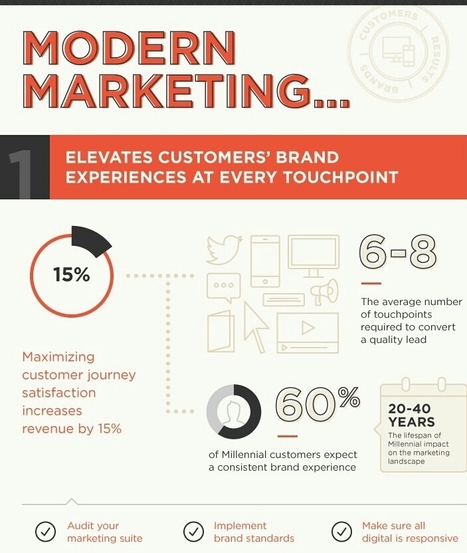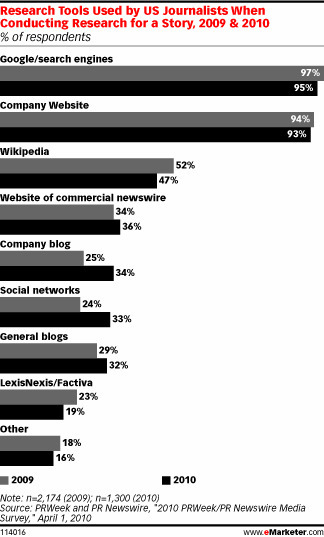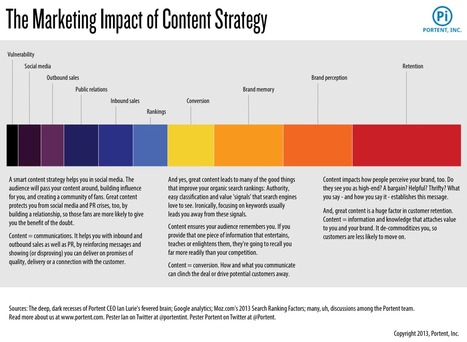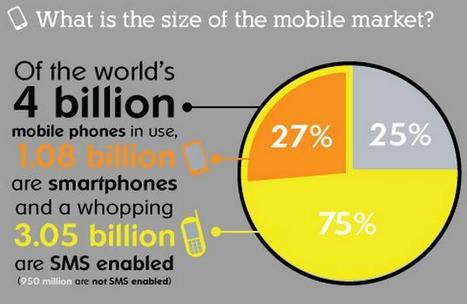When you think of the basics of marketing, you might be thinking: Okay, create an awesome website; design and send some cool emails; post strategically to social media; maybe supplement with some advertising.
But what about the principles behind your campaigns? When you're planning and doing all of these marketing activities, what motivates your decisions?
Today, the most successful marketers aren't just crossing items off their to-do lists; they're taking a holistic, adaptive approach to their marketing. They're elevating the customer experience, building personalized connections, adapting to the evolution of technology, attracting customers to them using inbound marketing, and more.
When marketers take this approach, they start creating a better brand experience and driving real business results. To learn more about the eight pillars of modern marketing,check out the infographic below from Olive & Company....



 Your new post is loading...
Your new post is loading...






















Learn the eight foundational principles of modern marketing so you can start creating a better brand experience and driving real business results.